The City of Dresden

View from The Frauenkirche (Church of Our Lady): Cathedral, terrace shore, art academy
The Frauenkirche (Church of our Lady), the Zwinger, the Semper Opera House, the Residential Palace, the Elbe river, over 50 museums and more than 30 theatres, both large and small – this is Dresden. The city is one of the most popular tourist destinations in Germany. Millions of visitors come to Dresden every year to admire its many attractions.
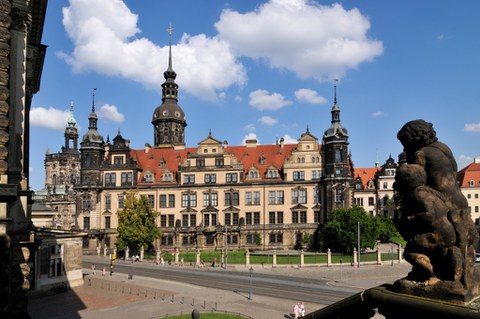
Royal Palace seen from the Zwinger, with Hausmannsturm tower
Dresden boasts a unique collection of historic buildings, great history and art treasures and fascinates with its own distinctive character.
The city owes its description as ‘Florence on the Elbe’ to the combination of the riches to be found in its art collections and the Italian influence on its architecture built under Augustus the Strong.
Dresden is the capital of the Free State of Saxony, the most south-easterly of the 16 federal states in Germany. Only two hours drive to the north lies the capital Berlin and to the south Prague, the capital of the Czech Republic. The city with its some 530,000 inhabitants not only has a strong cultural attraction, it is also the political, economic and scientific centre of the Free State of Saxony.

Technische Universität Dresden - Beyer Building
Dresden is home to numerous research institutes and universities, among them the TU Dresden, which in 2012 was honoured with the title of "University of Excellence".
But Dresden is not only the Saxon capital for business and science, it is also one of the greenest cities in Europe.
The Great Garden, the broad meadows along the Elbe, the Heide Forest, numerous palaces, parks and green open spaces in and around Dresden influence the quality of life in the city and encourage its inhabitants and visitors to spend time outdoors.
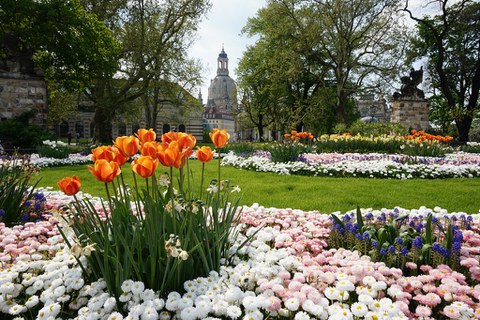
Park which surrounds the entrance to Dresden’s historical city. Church of Our Lady and art academy in the background.
Dresden’s green landscape is further complemented by the vineyards on the slopes of the Elbe valley. Wine is even grown in the city of Dresden itself, a fact that makes Dresden the most northerly city with a tradition of wine growing.
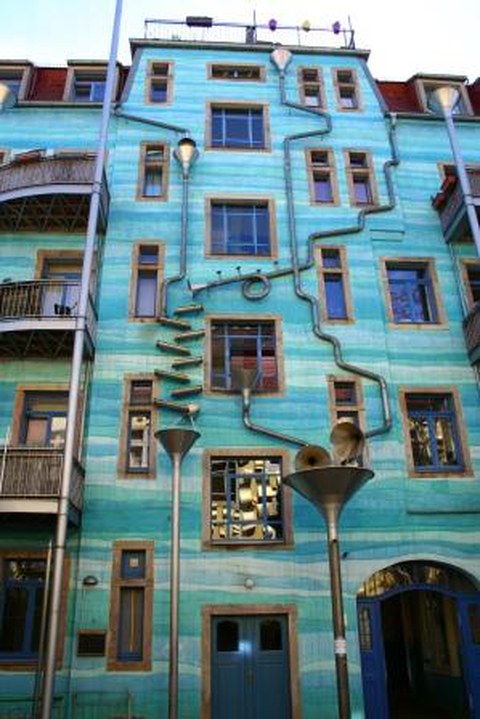
The Kunsthof passageway is a place for all kinds of discoveries at Äußere Neustadt
The colourful side of Dresden is to be seen in the artistic quarter of Äußere Neustadt with its characteristic buildings, many of them dating back to the end of the 19th century.
The untold number of bars, cafés, restaurants, clubs, galleries and small theatres make this lively area of Dresden the undeniable centre of the young, alternative Dresden scene.
The Gründerzeit quarter embodies a highly creative spirit of innovation, reflected above all in the abundance of great shops and trendy labels.
The Kunsthof (Artists' Court) arcade that links Alaunstrasse 70 with Görlitzer Strasse 23-25 is the site of creative, colorful and diverse activity. Five courtyards are designed according to specific themes, and they house numerous restaurants and cafés, galleries and shops.
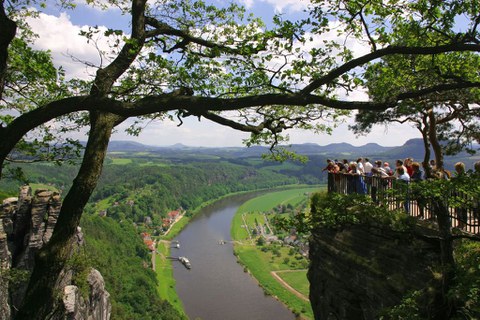
Panorama view from Königstein Fortress over the river Elbe in the Saxon Switzerland.
Within half an hour by train you can reach the town Stadt Wehlen, which is located in the Saxon Switzerland, a bizarre world of rocks and gorges. A trip to this town is recommendable for hiking enthusiasts because of the numerous hiking trails which lead from the river Elbe through the town up to the Bastei viewpoint. From there you can enjoy a majestic panorama which also includes Königstein Fortress, the largest fortified castle in Germany on a rocky plateau.
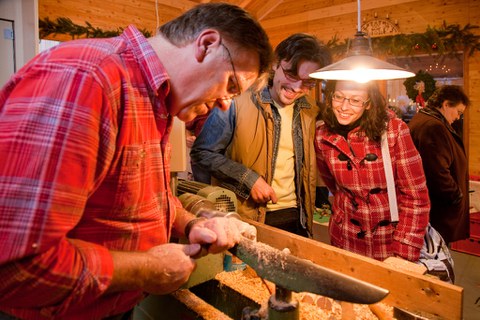
Traditional craftmanship.
If you are interested in traditional German craftsmanship we recommend a weekend trip to the town of Seiffen which is located in the Ore Mountains on the southern border of Saxony (approx. 2 ½ hours by train and bus). There you will have the chance to purchase Nutcrackers, Christmas pyramids, angel and miner figures, Schwibbogen and you are welcome to visit craft workshops, the Museum of Toys and the world-famous Seiffen church.
Discover Dresden at www.dresden.de
Text: © Dresden Marketing GmbH
TU Dresden's Institutional Strategy is funded by the Excellence Initiative of the German Federal and State Governments.
